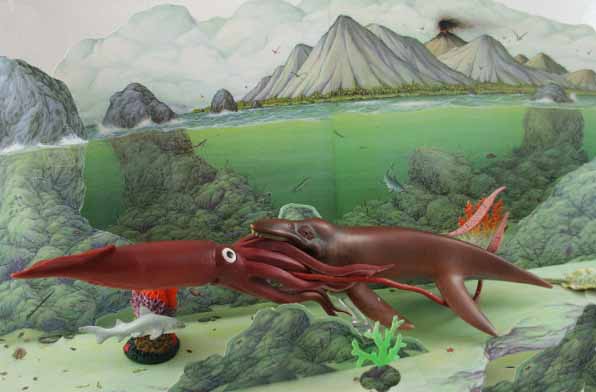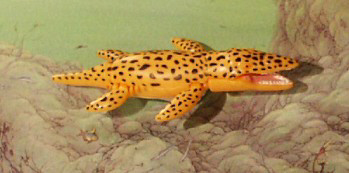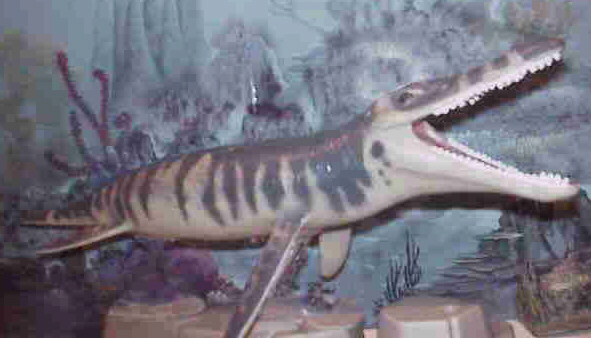
The Early Cretaceous Sea
from the Dinosaur Collector
Updated 010108 proof 100306 rjk
More Diorama Pages
Giant squids like Boreopeltis are known from Australia, where they show evidence of predation by Kronosaurus. Today’s
giant squid live at depths of 600 – 1000 feet and are preyed on by
Sperm whales. In the Late Cretaceous, the interior seaway of North
America was extremely active, and squid were seemingly common animals;
five species have been described, but the largest of all were Niobrarateuthis bonneri, Niobrarateuthis walkeri and Tusoteuthis longa.
Squids are hard to identify as they gave up the shells, and their soft
body parts don’t fossilize except in rare instances. Squid pens, or the
gladius, are the internal remnants of the exterior shell of the
primitive nautiloid ancestral cephalopods and they do leave
fossils. “Fossil Teuthids” are largely identified and classified
by variations in the shape of the gladius alone, and comparisons with
living species of cephalopod. Tusoteuthis was large; it is neither a close relative nor a deep-sea dweller but was similar in size to modern giants
.
Kronosaurus is a pliosaur; a marine reptile that lived in the vast inland sea that covered western Queensland between 110 and 100 million years ago. Kronosaurus is named after Kronos, the Greek god of time. It had rounded rear teeth that were suited to crushing hard-shelled prey.

Early Cretaceous Kronosaurus has been projected up to 13 meters (43 feet), but recent studies of its fossil skull and other parts, and comparisons with other pliosaurs, suggest that the true length was probably only 9–10 meters (30–33 feet).
.
Kronosaurus became extinct about the Middle Turonian stage of the Late Cretaceous.
next To the Cretaceous ichyjtosaurs 